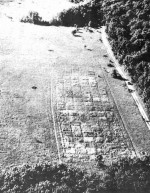Cedar Creek Natural History Area, which has been in the LTER network since 1982, is a 2200 hectare experimental ecological reserve. Located 50 km from Minneapolis and St. Paul, it is convenient for researchers from the University of Minnesota, which owns and manages the reserve, and for those flying in from out of state.
Cedar Creek lies at the boundary between prairie and forest. It is a mosaic of uplands dominated by oak savanna, prairie, hardwood forest, pine forests, and abandoned agricultural fields and of lowlands comprised of ash and cedar swamps, acid bogs, marshes, and sedge meadows. Large tracts of the pre-agricultural ecosystems of the region are preserved within its boundaries as is a successional chronosequence of more than 80 old fields of known history. A program of prescribed burns, begun 25 years ago in a large tract of native oak savanna, has 12 blocks with fire frequencies ranging from one per year, to one per 7 years, to unburned controls. These have diverged dramatically in their vegetation and soils in response to fire frequency. The soils of Cedar Creek, derived from a glacial outwash sandplain, span five of the ten soil orders. Upland soils are nitrogen poor: numerous nutrient addition experiments performed in both old fields and native savanna have shown that nitrogen is the major soil resource that limits plant growth. Cedar Creek has a continental climate with cold winters, how summers, and precipitation (66 cm/yr) spread fairly evenly throughout the year. The mean July temperature is 22.2°C while the mean January temperature is -10°C.
The Cedar Creek LTER is using long-term experimentation and observation to examine the controls of successional dynamics and spatial patterning in ecosystems at the prairie-forest boundary. We have established 1100 permanent, long- term experimental plots as well as 2300 permanent observational plots distributed across a chronosequence of 22 old fields. Our studies focus on hypotheses concerning the direct, indirect and feedback effects of various species and ecosystem elements on each other, Although we study whole ecosystem processes, a major goal of our project is to understand the underlying mechanisms that control these processes. Work focuses on:
- Dynamics of carbon and nitrogen in the soil
- Controls of primary productivity
- Herbivory
- Disturbance
- Modeling
Our studies of soil carbon and nitrogen dynamics, which are led by David Grigal, John Pastor, Don Zak, David Tilman, and Jean Molina, include work on litter decomposition, species-specific litter feedback effects, N mineralization, nitrification and leaching, N fixation, microbial and mycorrhizal blomass, and dissolved organic carbon dynamics.
Studies of primary productivity and the controls of plant community composition are performed by David Tilman, Scott Wilson, Richard Inouye, Mark Davis, Nancy Huntly, and Eville Gorham. This research includes nutrient addition experiments in uplands and wetlands, water table manipulations in wetlands, detailed studies of the nutrient and light dependence of growth of major plant species, studies of the mechanisms of interspecific competition, and studies of plant colonization, growth and competition in patchy habitats.
Herbivory research, led by Nancy Huntly, Richard Inouye, John Pastor, and David Tilman, includes long-term observations on the population dynamics of the major herbivores (small mammals, deer, and grasshoppers), selective removal of herbivore guilds, deer exclosure experiments, gopher exclosure experiments, comparisons of fenced and unfenced nitrogen gradients, and studies of the impact of herbivores on carbon and nitrogen dynamics and cycling.
Our studies of disturbance, coordinated by David Tilman, Eville Gorham, John Tester, and Richard Inouye, consist of comparisons of disturbed and undisturbed plots that receive different rates of nitrogen addition, our 25-year running set of prescribed burns in oak savanna, a 6-year running set of prescribed burns in an old field, manipulations of depth to water table (as a mimic of effects of climatic change), and observations on the pattern and frequency of disturbances in old fields, savanna, forest, and wetlands.
We are also working on analytical and simulation models of various ecosystem attributes. These models, which address processes occurring on a range of spatial and temporal scales, are being developed and tested under the direction of David Tilman, John Pastor, and Anthony Startleld.
In addition to support from NSF’s LTER program, this research is funded by other NSF grants and by a grant from the Andrew Mellon Foundation to David Tilman, Eville Gorharn, and Margaret Davis. The Mellon grant, designated for sustained ecological research, has allowed us to expand our analytical chemistry laboratory and to provide funds for undergraduates and faculty of liberal arts colleges who wish to become involved in tong-term ecological studies.
The Cedar Creek LTER group invites and encourages interested scientists to work at Cedar Creek or to expand their research to include Cedar Creek as a site. We are excited by the potential advances that could come from cross-site research, and are interested in cross-site collaborative efforts. Please contact Dr. David Tilman, Department of Ecology and Behavioral Biology, 318 Church St. SE, University of Minnesota, Minneapolis, MN 55455 for information.

 Enlarge this image
Enlarge this image